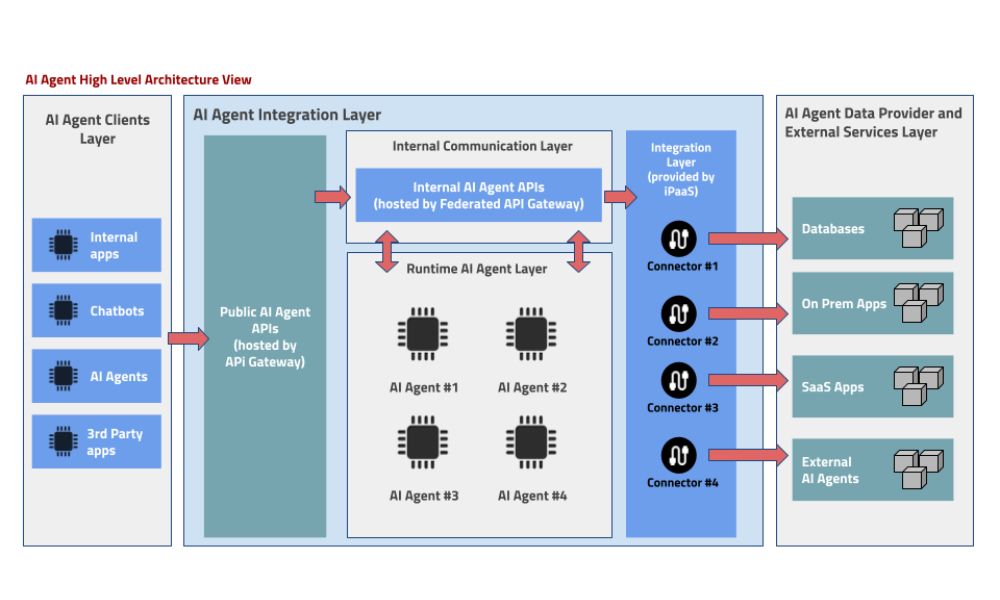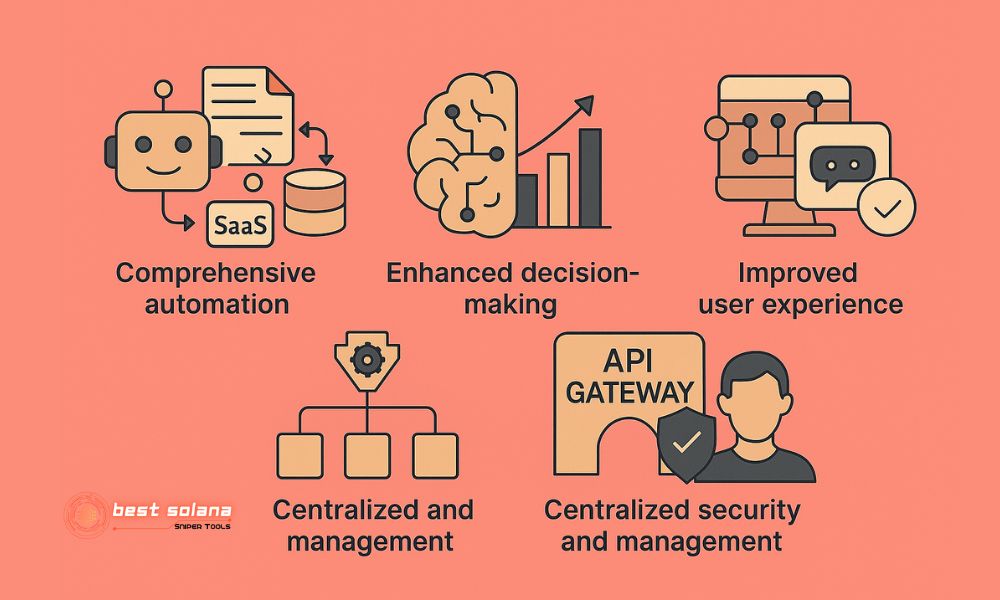AI agent integration is the process of connecting artificial intelligence agents with diverse systems, data sources, and applications to enable seamless operation. This crucial process not only helps automate complex workflows but also unlocks the potential for effective data utilization, creating a truly intelligent and flexible ecosystem for any modern enterprise.
What is AI agent integration?
In today’s rapidly evolving technological landscape, AI agents are no longer isolated entities. To realize their full potential, they need the ability to interact, communicate, and exchange data with the digital world around them. This is precisely where the concept of AI agent integration becomes critical.
Simply put, AI agent integration is the art and science of connecting AI agents with other components in an IT system. These components can be internal databases, third-party SaaS applications, legacy on-premise systems, or even other AI agents. The ultimate goal is to create an automated, intelligent, and uninterrupted workflow where AI agents can access necessary information and take action proactively. A well-executed AI agent integration strategy is fundamental to achieving this.
Analyzing the high-level architecture of AI agent integration
To better understand how it works, let’s analyze a high-level architectural model. The diagram below illustrates a typical structure for integrating AI agents in an enterprise environment.
This architecture is divided into three main layers, each playing a distinct role in the overall system.

AI Agent Clients Layer
This is the interface layer where users or other applications interact with the AI agent system. This layer includes:
- Internal apps: The company’s internal business applications.
- Chatbots: Conversational interfaces that act as a bridge between users and AI agents.
- AI Agents: Other AI agents that may need to call upon this system.
- 3rd Party apps: External applications that are granted access.
All requests from this layer are sent to the integration layer through “Public AI Agent APIs,” which are managed and secured by an API Gateway.
AI Agent Integration Layer
This is the heart of the system, where logic is processed and all activities are coordinated. This layer has a complex structure, including:
- Runtime AI Agent Layer: This is where the AI agents (e.g., AI Agent #1, #2, #3, #4) actually operate, compute, and make decisions. Each agent can be designed for a specialized task.
- Internal Communication Layer: This acts as a communication intermediary between the agents in the Runtime Layer and external connections. It uses “Internal AI Agent APIs” to ensure the internal information flow is smooth and secure.
- Integration Layer (provided by iPaaS): This is a critical component that performs the task of AI agent integration. Using an integration Platform as a Service (iPaaS), this layer provides standardized “Connectors” to communicate with external systems.
AI Agent Data Provider and External Services Layer
This layer comprises all the resources that AI agents need to perform their tasks. The Connectors from the integration layer will connect to this layer to fetch data or execute actions. The components include:
- Databases: Relational or NoSQL databases.
- On Prem Apps: Applications running on the company’s on-premise infrastructure.
- SaaS Apps: Software as a Service applications (e.g., Salesforce, Office 365).
- External AI Agents: AI agents from other systems.
An effective AI agent integration process ensures that the agents in the Runtime Layer can safely and reliably access all these resources.
Strategic benefits of AI agent integration
Building a robust architecture for AI agent integration is not just a technical challenge; it also brings many strategic benefits to the business:
Comprehensive automation: AI agents can execute complex processes that span across multiple different systems, from reading customer data in a database to updating information in a SaaS application and sending notifications via email.
Enhanced decision-making: By integrating with multiple data sources, AI agents gain a comprehensive and up-to-date view, helping them to make more accurate analyses and decisions.
Flexibility and scalability: An architecture based on APIs and Connectors allows businesses to easily add new agents, applications, or data sources without overhauling the entire system. This is a core element of a modern AI agent integration system.
Centralized security and management: Using an API Gateway for both public and internal access helps centralize security management, traffic monitoring, and access control.
Improved user experience: End-users (via chatbots or applications) only need to interact with a single interface, while the entire complexity of data integration and processing is handled invisibly in the background.

In conclusion, AI agent integration is not just a technological trend but a fundamental requirement to fully harness the power of artificial intelligence. A well-designed integration architecture serves as a solid foundation for automation, innovation, and creating a sustainable competitive advantage. For the latest insights on technology and AI, continue following the articles on Best Solana Sniper.
